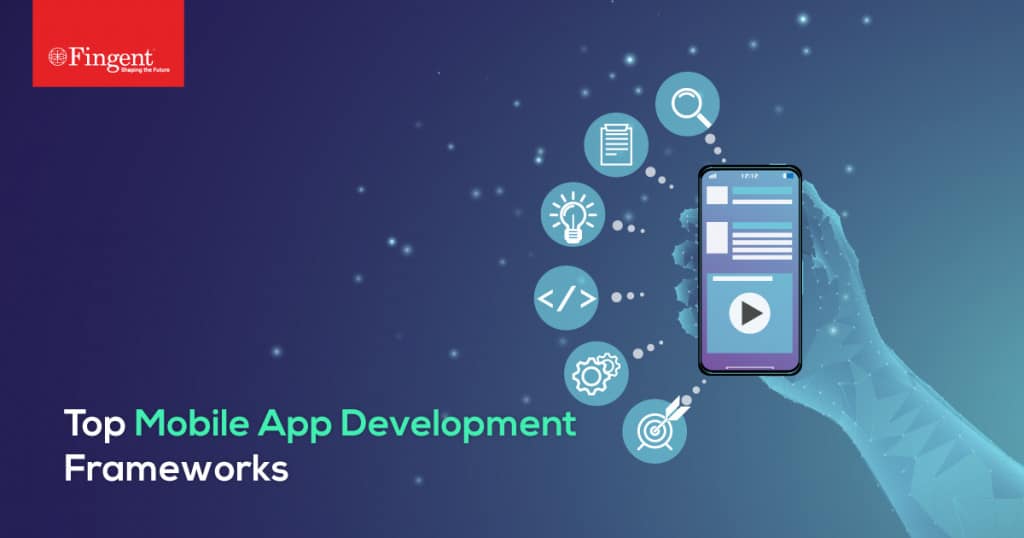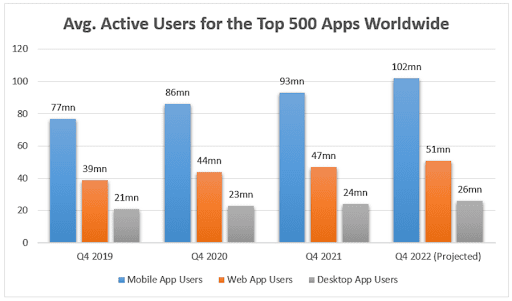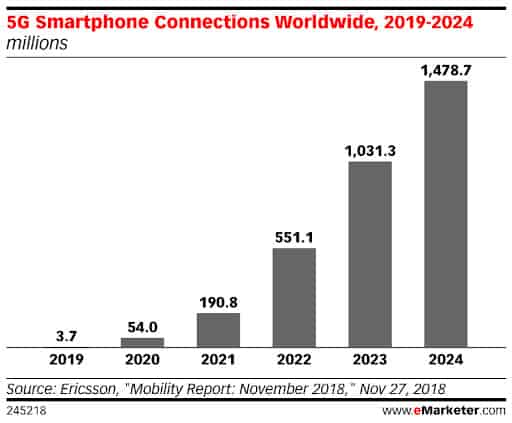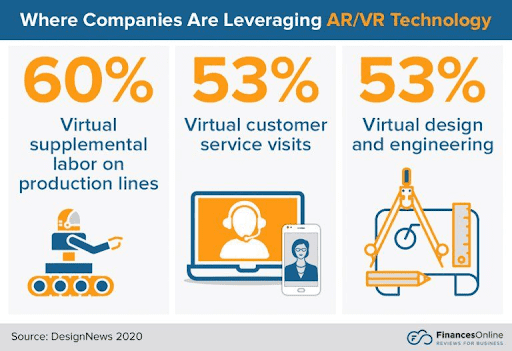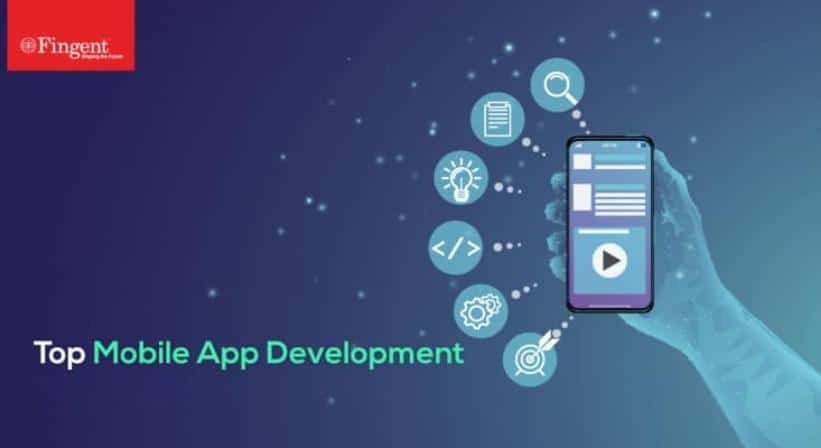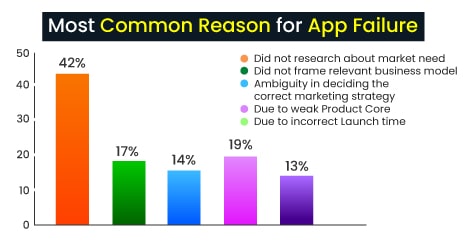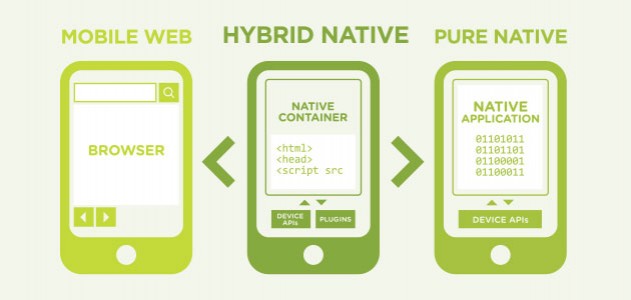Tag: cost of mobile app development
Everyone uses software products. From toddlers to grandparents, in one way or the other, almost everyone has used a software product. The number of mobile devices operating worldwide stood at almost 15 million in 2021! Today, software development permeates the entire world. You are reading this blog on a device whose lifeblood is software. It is no surprise that businesses invest in software development. But what is the cost? That is probably the single most important question to businesses intent on making wise business decisions. This article discusses everything that may affect the cost of app development in 2024 to help you estimate the cost of your app development.
Is App Development Necessary for Your Business?
Adding to the Statista report that put the 15 million number on the number of mobile devices, did you know that the number of mobile app downloads surpassed 200 billion in 2019? And there is no slowing down.
Along with mobile devices, there are other devices like tabs, laptops, and desktops. And we know that all of these function by the operating system. The operating system is a piece of software with lots of integrated functions known as software.
Individuals and businesses across the world depend heavily on software and enjoy many benefits. In this digital age, the software is essential to run different operations in transportation, electrical grids, and many other functions that offer the basics of life.
To the question “Is App Development Important?”, the answer is a resounding YES. Now to the costs involved.
App Development Cost Estimates For 2024
It is important to remember that app development cost depends on various factors. Mobile app development costs will be different than web app costs. The cost could also depend on the complexity of the app.
A small app with core features can be developed at lower rates. However, a complex app with intricate features will be expensive. Building a minimum viable product may cost less than $10,000. On the other hand, if you want an app that is compatible with both android and iOS platforms you will need a bigger budget.
App development cost also depend on whether you develop the app in-house or outsource it. Before you choose to develop it in-house you must ask yourself if your team has the necessary experience to take an app from design to delivery.
If you do not have the expertise on your team, it may ultimately end up costing you more in terms of lost work and demoralized teams. Otherwise, the best option is to seek out an external partner who can develop an app for you.
Read more: Top Technologies Used to Develop Mobile App
Keeping all this in mind, is there a formula to calculate app development costs?
Top Factors That Drive App Development Costs
1. Based on the complexity of the app
A simple app might take hundreds of hours while a complex app might take thousands. These hours also depend on how efficient the developing team is.
A simple app includes basic features like a login screen, user account, admin tools, and so on. It may have limited integration with other apps. Thus, it may take about 3 to 6 months to develop.
Along with all the features of a simple app, a complex app includes features such as integrations, profile feeds, enhanced admin tools, media streaming, and more. Such an app would take 6 to 12 months.
The most complex of all is an advanced app. This includes multi-language support, versioning, lots of user customization options, AI and AR, and more. This could take somewhere between 12 to 24 months.
2. Based on region
You will find potential developers around the world, over various time zones such as the US, India, and Europe. Each of these areas has expert developers but their rates vary depending on their location.
3. Based on development stages
The budget of the project starts to become clearer during the research stage. In this stage, you will be able to clarify your requirements and finalize goals and deliverables. You will also be able to assess risks and threats.
The next stage would be designed where the development team needs a clearer idea of what the app should look like. This stage will take longer and will be more expensive depending on the complexity of the user interface and so on.
During the development stage, each feature will add to the cost. The next stage of testing may require human users to ensure the correct functionality, and this will add to the cost. The final stage is maintenance and support. Bugs and unexpected behavior will need to be addressed; hence, it is important to budget in the final phase.
Watch now: How To Choose The Right Mobile App Development Approach
Top Ways In Which One Can Initiate Cost-Effective App Development
Are you wondering how you can get the app that you wanted in your limited budget? Here are a few tips that help you initiate a cost-effect app development.
1. Use software development kits wherever you can: Software development kits could trim weeks or months off your development schedule. Thus, reducing thousands off your development budget.
2. Find a vendor that can design and develop: Finding a vendor that does both designing and development can help you deal with communication problems and optimize workflow.
3. Get the MVP made: Getting the MVP made and testing on your users will help you identify what needs to be added. Eventually, your full-featured app will be ready. Besides, you will also learn how to optimize your budget.
4. Cross-platform development: Opting for cross-platform development can heighten your potential to reach a wider audience.
5. Do not rely on older operating systems: Just a couple of years older can make a huge difference. It is worth the effort to focus on consumers who keep up to date.
How Can Fingent Help Develop Top-Notch Apps On A Budget?
We at Fingent custom software development experts understand considering how much it costs to develop an app can be an overwhelming experience. How about a consultation with our expert to get a quote?
We assure you that we have the specialized skill and experience to build a successful and budget-friendly app. Don’t take our word for it. Have a look at some of our case studies.
As your technology partner, Fingent can bring your brilliant ideas into digital reality!
We have helped many businesses grow their business with our innovative, modern mobile app solutions. Take a look at our most success stories here!
We can help you too. Connect with our experts today!
Stay up to date on what's new

Featured Blogs
Stay up to date on
what's new



Talk To Our Experts
Stay up to date on what's new

Featured Blogs
Stay up to date on
what's new



Talk To Our Experts
Concerned about app development costs? Here’s all you need to know!
There will be more people with access to smartphones in coming years than with access to running water! Well, then there’s no questioning the fact that app development has become the need of the hour to capture the huge rapidly growing market. Investing in app development is valuable to establish yourself as an authority in your industry. As much as you would like to build an app, you might have many queries. One most pertinent question is: How much does it cost to create an app? This will be answered in detail in this blog.
How much does it cost to create an app?
Some people think that creating an app requires a gigantic investment and that the cost of app development is an expensive affair. The truth is, not all types of apps require a princely budget. There is a lot of thought and work that goes into building an app from scratch, so the cost may vary. But looking into what is involved will help us make a fair estimate.
It is important to understand that the cost to build an app depends on various factors like the type of app, the platform you choose, the design, and the number of pages required. For instance, an app that doesn’t require back-end features like an email subscription, calendar, or social login, and API integration will not need a huge budget. On the other hand, multi-lingual support, custom features, and real-time updates will need resources in terms of the development budget. Each app is unique and the cost of making an app is based on the time and effort required to build an app.
HackerNoon rates Fingent in the Top 20 when it comes to Mobile App Development Services. Our mobile team has years of experience working with a range of cost-effective mobile application projects. We’ve helped some of the world’s biggest companies create applications to enhance user experience and integrate new-age technologies.
What Are Some Major Factors That Affect the Cost to Build an App?
Let’s look at some of the specifics that we need to consider, that may affect the cost of building an app.
1. Functionalities, Scope, And Features of the App
The cost of building an app is going to depend on what you are trying to accomplish. Determining that will give a measure of clarity to the scope of the project. If the business is looking forward to a broader scope and returns from the app, it will have to be extensively developed with many functionalities. However, if the purpose of an app is to just establish a mobile presence and develop another channel to connect with end-users, then a limited feature app would suffice. When the goal and overall business purpose is clear to the development team, they will be able to accurately estimate the cost of developing an app.
Read more: Mobile App Development: 4 Tips To Consider
2. Number of In-App Pages
Another vital factor that determines the cost of building an app is the number of screens in the app. The more the number of screens, the more extensive the work required from the designers and UX experts. More screens would also mean higher interlinking of pages through the app, which requires adjustment of conditions so that users can easily access any particular in-app page. Such complex apps demand more time and effort from app designers and developers.
3. Platforms and Devices
The complete cost of developing a native app for a specific platform is different from developing a hybrid app that runs on multiple platforms and devices. Further, the app development cost also depends on the type of device the app is developed for.
Making an app for devices running on Android, iOS, Windows, or Blackberry needs different sets of integration for each type of device. Additionally, supporting different generations of the same device can be another factor that increases the cost of building an app. iOS apps will need to be built to support the latest as well as previous iOS versions. The complexity of the Android market adds to the difficulty in determining a single standard cost of developing an Android app.
Read more: White Paper- Choosing The Right Mobile App Development Approach For Your Business
4. Type of App Development Team
Based on the complexity of the project, the app development team may comprise a project manager, designer(s), developer(s), and quality assurance engineer(s). You also have the choice of opting for a basic team with a backend developer, admin panel designer, Android or iOS developer.
5. Elements of App features
- Third-party integrations: Mobile apps require third-party libraries, frameworks, and services.
- Backend development: Backend implements the app’s business logic enabling the exchange of data between the mobile and database.
- Hardware components: Identifying the right approach for communication between hardware and software components will make a difference in the cost of building an app.
6. Database
Apps that allow end-users to upload videos, photos, and submit comments or reviews take more time in development. This would increase the complexity of an app because the user’s information must be stored and made available for future use. Obviously then, the app development cost and time for database-driven apps would be more.
7. Post-launch Expenses
The total cost of creating an app includes the money spent on actual programming as well as post-launch maintenance and updates like cloud hosting, backend server maintenance, and app marketing.
8. App Type
Choosing the right type of application for the project will have a massive impact on the overall cost to create an app. Apps can be categorized as:
- Web Apps: Web apps use a responsive design for smooth user experience across various screen sizes and operating systems.
- Native Apps: Native apps could be more expensive because they are optimized for high performance on a specific platform.
- Hybrid/Cross-platform Apps: This approach is best suited for the needs of a large audience across different platforms. The development and maintenance costs of this approach are lower when compared to the other approaches.
Read more: Hybrid Mobile App Development: When and Why To Choose For Your Business?
9. License and Legalities
Businesses that want to protect app features that could be knocked off by competitors may want to obtain a Patent, Copyright, or Trademark which increases the cost of building an app.
10. Support and Maintenance
Adding new features and refining existing features of the app will cost you. This is unavoidable because technology is constantly changing, and new updates will have to be made for your app to function seamlessly.
Are you ready?
As of August 2020, there are 3.50 billion smartphone users in the world. As mentioned in the outset, Cisco Visual Networking Index Global Mobile Data Traffic Forecast says that there will be more people with access to smartphones in coming years than with access to running water. Additionally, App Annie forecasts that consumers will be willing to spend a staggering $157 billion on mobile apps by 2022, an increase of 92% from 2017. Now, these numbers should leave you with no doubt that you must make full advantage of this trend by building an app for your business.
However, having a great idea for an app is one thing but making it available to end-users is another. This guide detailed the cost of making an app, with varying features, technologies, platforms, and more for you to make an informed decision, but if you have any questions or you want to get started on building that app, give us a call.
Stay up to date on what's new

Featured Blogs
Stay up to date on
what's new



Talk To Our Experts
If you are reading this blog article, chances are that you are either contemplating to have a mobile app built for your business or you are a developer wanting to know how much to charge for mobile application development. Either way, you must know the criteria behind the costing of the task.
So what goes into arriving at a cost figure for developing a mobile application? Let us delve a bit into the details and find out.
Project Priorities
Every software has priorities in its objectives– High, Low and Medium. In the same way, you need to consider your priorities for mobile apps in the form of 3 criteria: Quality, Speed, and Budget. Behavior analysis has shown that only two of the three can be chosen to achieve a great result. Software firms or freelance developers claiming to design, develop a great mobile app for you in a very low turnaround time, at a low cost as well as with quality, sound too good to be true and hence, as a client, you need to be careful before accepting a proposal.
Basis of Charging
Mobile apps, just like any other software, need to be estimated in terms of effort required. For this, your requirements must be clearly defined and communicated to the developer. Always document your requirements because the cost of mobile app development depends on the number of requirements. A mobile app requirements doc comes in handy during mobile app development. Have a clear idea about what is required by your company, Before opting out for mobile development solution.
After this, you need to strike an agreement as to the costing of the development effort – whether a fixed cost will be charged by the developer, irrespective of time spent by the developer. As against this, some developers charge on an hourly basis, in which case the final cost is determined by the number of hours spent by the developer on delivering the mobile app.
Agile Development normally involves an hourly charge, whereas Waterfall model follows a Fixed Cost basis.
Platform Specific Development vs. Cross-Platform/Hybrid Development
If you need your mobile app to be specifically developed for platforms, it might prove to be less expensive as compared to developing mobile apps for all platforms. For example, Android-specific development requires expertise in Java, whereas Windows and IoS require expertise in Microsoft Dot Net and Swift programming code respectively. Needless to say, if you need your app to be on all platforms, costs will escalate.
Hybrid apps dramatically reduce development time and cost and combine the best of both worlds, using a common code base to deploy native-like apps to a wide range of platforms. It involves the “coding once and deploying everywhere (all platforms)”– but these still require expertise in the above programming languages in case of issues with deployment.
Complexity in Design
If it is a general mobile app with no back-end server integration, hard-hitting features and has a simplistic design, you might end up getting it developed for a lower price. For example, apps with typical server components and API integration are more challenging and hence would spike up the cost, as against those not involving them.
In short, the more features to be had in the mobile app, the more will it cost and vice-versa.
Engaging the Right Expert
This is necessarily a choice to be made if you do not intend to create the app yourself using popular online mobile app builders or programming it yourself. Services of a software development firm are going to be expensive, but you can assure yourself of an exhaustive app since most of such firms are professional in their development process and consider every nook and cranny for the targeted application.
Getting freelancers to do the job is another option; this will bring down your development cost considerably, albeit with some disadvantages.
To Round up….
Mobile apps are a rage in today’s times. People are more inclined to open a website or an app on their mobile devices rather than on laptops or desktops. Over the last decade, we have been one of the pioneers in developing mobile apps which offer a rich user experience and user interface, by way of our high-quality standards in software development. Get in touch with us for a quote, now!
Stay up to date on what's new

Featured Blogs
Stay up to date on
what's new



